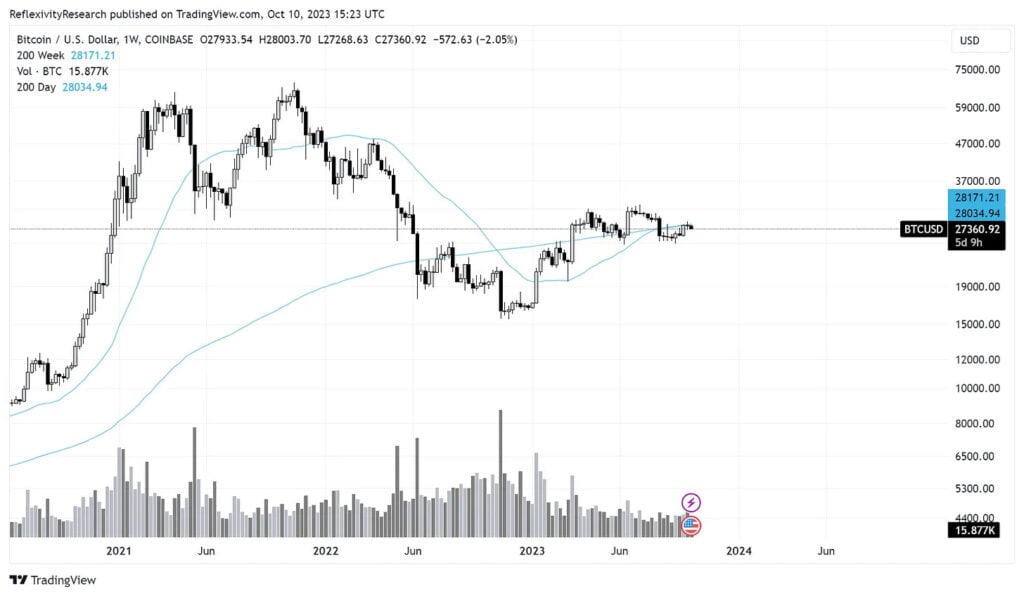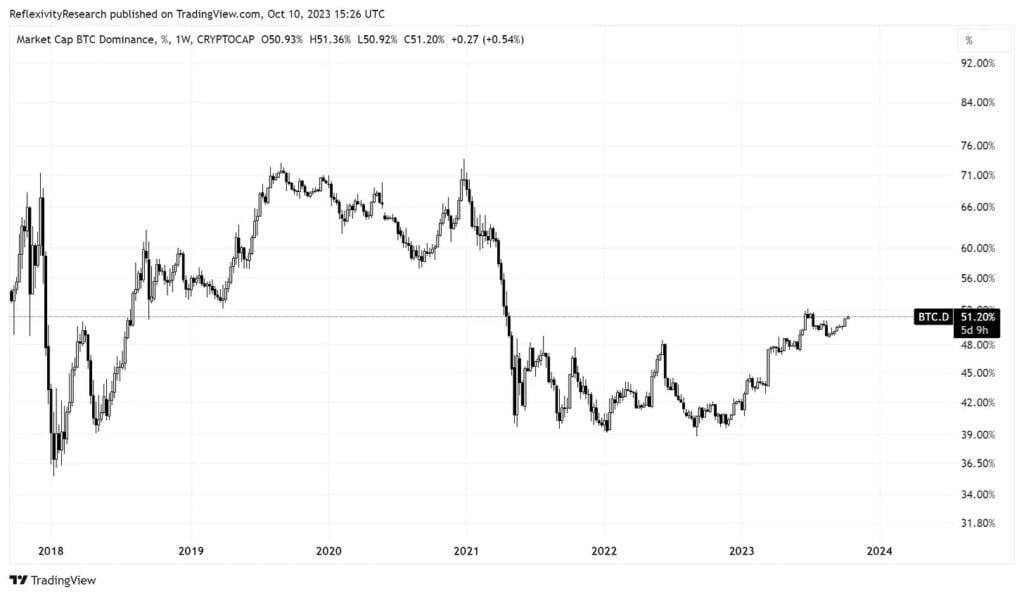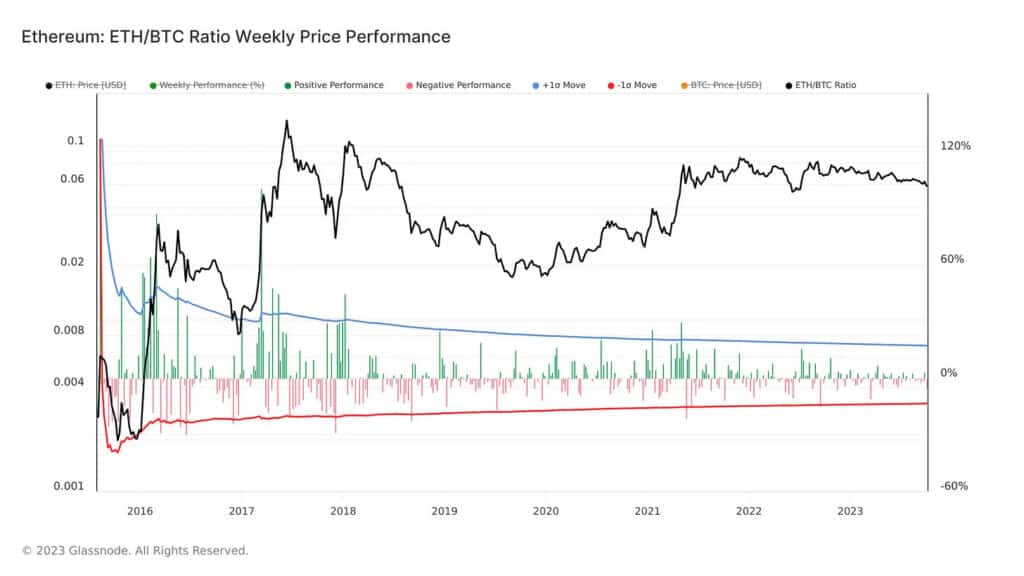Bitcoin (BTC) is facing some stiff headwinds as it struggles to regain its footing above the $28,000 level. These challenges come in the form of rising US treasury yields, a resurgent dollar, and geopolitical uncertainties. Nonetheless, despite these hurdles, Bitcoin is proving itself to be the star performer in the asset world for the year 2023, boasting a remarkable year-to-date (YTD) return of 63.3%, according to a recent report by the digital asset research firm Reflexivity.
This surge in performance has occurred alongside a key development in the legal battle surrounding Ripple, where a judge blocked the SEC’s attempt to appeal, further bolstering Bitcoin’s position.
Monitoring Bitcoin Dominance
According to the report’s in-depth analysis, in recent weeks, Bitcoin faced challenges in surpassing its 200-week and 200-day moving averages. These difficulties were further amplified by the impact of rising US treasury yields, a stronger US dollar, and geopolitical unrest.

However, an infographic shared by New York-based Bitcoin investment firm NYDIG highlights that Bitcoin has emerged as the leading asset class in 2023, boasting an impressive year-to-date return.
This performance outshines other contenders such as US large-cap growth stocks (28% YTD), US large-cap stocks (13% YTD), bonds, commodities, and real estate investment trusts (REITs).
A critical metric to monitor is Bitcoin’s market cap dominance, which reflects Bitcoin’s market capitalization as a percentage of the total cryptocurrency market capitalization. This indicator serves as a barometer for risk within the crypto market.
Similar to traditional markets, capital initially gravitates towards a select set of top-quality assets. From there, it gradually diffuses into more speculative ones. The crypto market follows this pattern, with Bitcoin taking the lead position, followed by Ethereum and other altcoins. The current upswing in Bitcoin’s dominance indicates that the crypto market is currently experiencing a healthy concentration of capital in the leading asset—Bitcoin.

The crypto sector has various indicators to gauge risk-taking behavior. Besides monitoring Bitcoin dominance, the ETH/BTC ratio is another crucial measure that evaluates how Bitcoin performs relative to Ethereum, the second-largest cryptocurrency by market capitalization.
Since September 2022, this ratio has been declining steadily. Both Bitcoin dominance and the ETH/BTC ratio serve as important indicators for detecting any potential shift from a Bitcoin-dominated market towards a more risk-tolerant environment. Except for a few exceptional performers, the outlook for the altcoin market appears uncertain.

Related Reading | Ethereum’s Wealth Distribution: Whales Cash In As Market Value Hovers At $1,570

